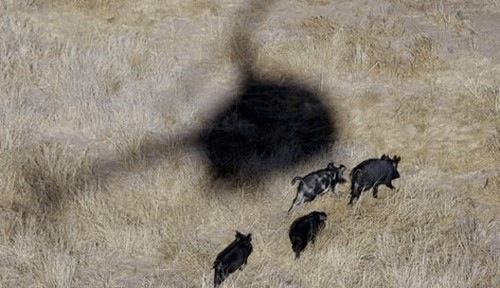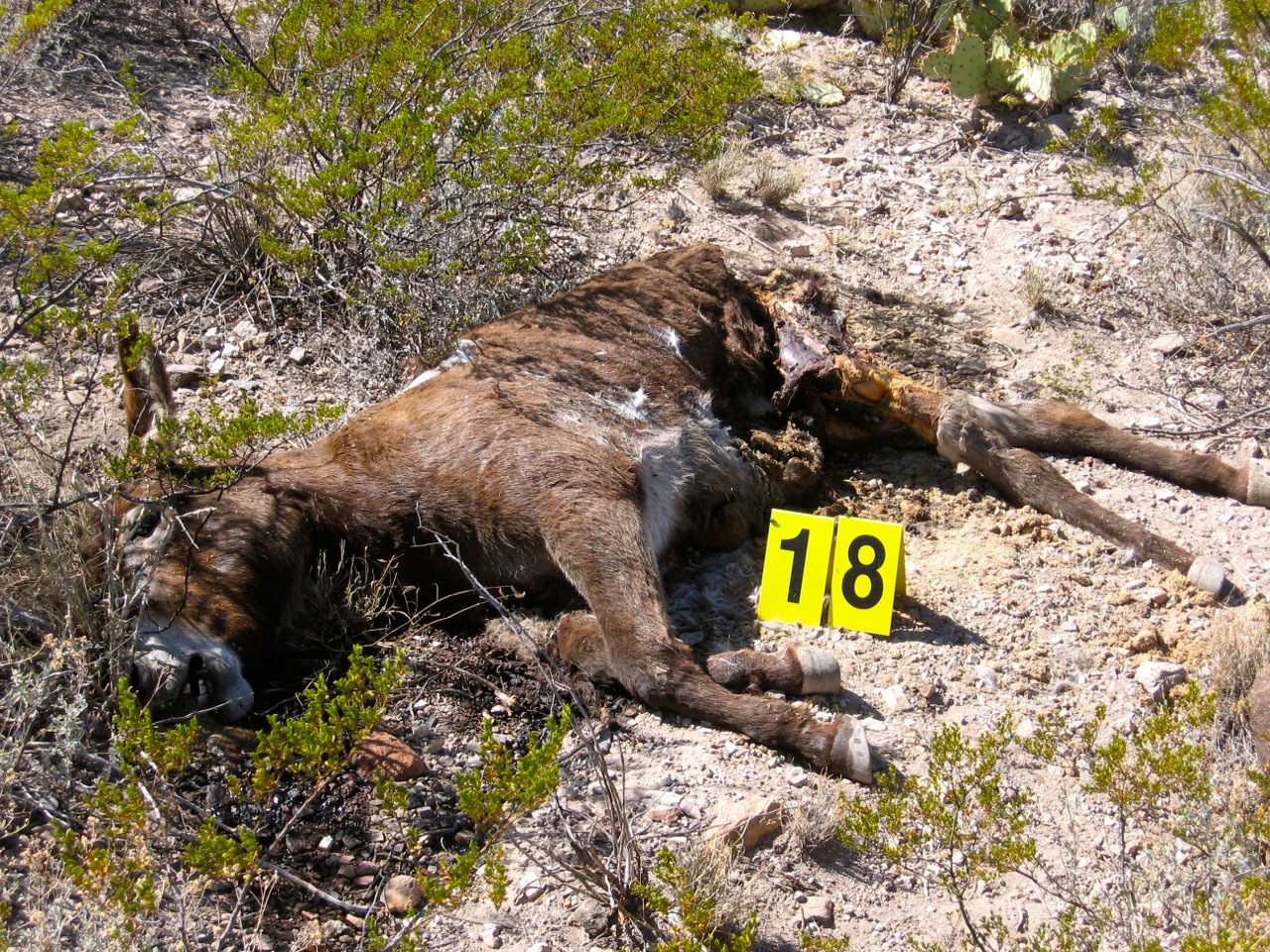Petition Targets ‘Rogue’ Killings by Wildlife Services

NOTE: Article initially appeared in the Washington Post on December 15th, 2013.
They say U.S. critter assassins work in secret, quietly laying traps, lacing food with poison, sniping at targets from helicopters. Few people know exactly how the hits go down; the methods are largely hidden.
What’s certain is that the U.S. Department of Agriculture’s little-known Wildlife Services program kills up to 3 million animals a year, mostly those deemed a nuisance but also some that agents kill by mistake, including endangered species.
Now, in a turnabout, the hunter is the target. A petition seeks to reduce the power of Wildlife Services and shine a light on its practices, claiming its agents have “gone rogue,” overstepping the mission to protect the public by killing indiscriminately.
There’s no dispute that Wildlife Services plays a valuable role by eliminating invasive animals such as nutria and starlings that are a menace. But critics have questions: How many is too many? Does the agency euthanize wildlife too often on behalf of farmers and ranchers without regard to ecosystems?
The petition filed early this month by the Center for Biological Diversity isn’t the first time that animal rights activists have squared off against Wildlife Services, but this time their coalition includes politicians who agree that the agency is too secret and too deadly. Even some federal workers frown on it; staff members at the U.S. Fish and Wildlife Service quietly dismiss Wildlife Services agents as “gopher chokers.”
“Wildlife Services is one of the most opaque and obstinate departments I’ve dealt with,” said Rep. Peter A. DeFazio (D-Ore.). “We’re really not sure what they’re doing. I’ve asked the agency to give me breakdowns on what lethal methods they’re using. They can’t or won’t do that. We’ve asked them to tell us what goes into their poisons. They won’t say.”
DeFazio and several colleagues requested a congressional hearing on the agency’s practices without success, so they pushed the USDA inspector general to conduct an audit, which was announced this month.
“The WS program is inefficient, inhumane and in need of a review,” the lawmakers wrote in a September letter to Inspector General Phyllis Fong. They said that the frequent killings of top predators, such as wolves, bears and coyotes, benefit “a small proportion of the nation’s private agriculture” and other interests.
Wildlife Services said in response that it has nothing to hide. Answering questions by e-mail, a spokeswoman said that the bulk of its work is to protect humans.
“For example, we work with the aviation community to protect the public by reducing wildlife hazards at more than 800 airports around the country,” spokeswoman Lyndsay Cole said. “Wildlife Services’ efforts to protect threatened and endangered species are conducted in more than 34 states. Wildlife Services also operates the National Rabies Management Program, which distributes oral vaccines in 16 states.”
The service has consulted with wolf-management agencies to “lessen the negative impacts of expanding wolf populations since the 1970s,” she said. In the Rocky Mountain and Great Lakes regions, “the wolf population has reached and exceeded recovery goals” set by managers, she said.
Cole said the agency’s kills are guided by a science-based decision-making model. In a 1997 program review, its most recent, the agency described it as “the integration and application of all practical methods of prevention and control to reduce wildlife damage.”
“This basically says they can use whatever methods at their disposal, whenever they want,” said Amy Atwood, a senior attorney for the Center for Biological Diversity. “Just saying you comply with the law doesn’t make it so.”
Concerns over Wildlife Services spiked last year when agent Jamie Olson posted photographs on Facebook showing his dogs attacking and mauling a coyote caught in a trap, said Camilla Fox, founder and executive director of the nonprofit Project Coyote, calling it blatant animal cruelty.
Olson acknowledged he made a mistake, “not in his coyote hunting practices but in letting the photos, which he says are more than five years old, be publicly accessible,” according to a blog post in the Missoula Independent, a weekly journal in Montana.
In January, Wildlife Services trapper Russell Files was arrested in Arizona for intentionally snaring a neighbor’s dog in a steel trap. Before it was rescued, the animal lost 17 teeth trying to chew off its leg.
Cole said Wildlife Services is reviewing the petition from the center and its co-signers — the Animal Welfare Institute, the Animal Legal Defense Fund and Project Coyote. The groups said their action is the first step toward a potential lawsuit if the agency fails to respond.
The petition calls Wildlife Services “an out-of-control, rogue agency that shoots, snares and poisons” a million native animals every year, “many unintentionally — including at least 13 endangered species.”
It calls on the Obama administration to develop a policy based on ecological science to ensure that the millions of killings carried out by Wildlife Services aren’t doing more harm than good, that it stops the unintended killing of endangered species and that it makes its operations more transparent.
Wildlife Services has existed under various names for more than 100 years. Its original mandate was to remove dangerous animals, particularly those that threatened western expansion.
The list included big and small game, from panthers to prairie dogs, otters and gophers. Invasive starlings from Europe that swarm farms to eat and drop waste in cattle feed are a priority target, as are nutria, also known as swamp rats, which destroy wetlands on Maryland’s Eastern Shore.
“Not everything this agency does is bad,” said Andrew Wetzler, director of the land and wildlife program at the Natural Resources Defense Council. “Whether it’s controlling rabies or feral hogs, there is a role for the federal government.”
But Wildlife Services doesn’t stop there. Since the Herbert Hoover administration in the 1930s, it has legally entered into agreements with ranchers, farmers and private industry, which pay half its costs for killing animals.
Wildlife Services has consistently declined to disclose who it has entered into agreements with and how the money is spent, Wetzler and other critics say.
“We asked them about data. How much do they use poison, where? How much do they spend renting helicopters to gun down coyotes and wolves?” Wetzler said. “The consistent answer we’ve gotten back . . . is: ‘We don’t know.’ There’s a severe lack of transparency.”
In the West, the agency targets many top predators — wolves, coyotes and bears — and removes them, Atwood said.
Without apex predators to take down big game such as moose, deer and elk, their herds linger in one area, trampling and chewing flora that a wide variety of other animals need to live.
A cascading effect casts a shadow over the landscape, said Bradley Bergstrom, a biology professor at Valdosta State University in Georgia. For example, he said, the elimination of native wolves in the Northeast in the 1960s cleared the way for nonnative coyotes.
The coyotes pushed out foxes that prey on deer mice, allowing populations of a rodent loaded with ticks that carry Lyme disease to explode. Lyme disease among humans has since become a major health concern.
Texans being proud of Texas like to think our state agencies, like Texas Parks & Wildlife Department, and our private non-governmental agencies (NGA’s) use better wildlife practices than the federal bureaucracies.
Sadly, with few exceptions there is only one way wildlife is “managed.” Politicians, agencies, universities, NGA’s have fallen under the sway of the agrichemical and agribusiness giants and their methods of industrial agriculture.
This agribusiness model has influenced wildlife practices and created an eradication mindset, using chemicals for plants and guns for animals, to deal with “invasive” species. The superstitious belief that the world is under attack by thousands of invasive, aggressive alien plants and animals has been given a pseudoscientific name: “Invasion Biology.”
Eradications – and the thinking behind them – are an actual, growing threat to wildlife and habitat, and these are being carried out in response to a trumped up “invasive species crisis.” This is what underlies the rogue killings of the Federal Wildlife Services.
These practices are as prevalent in Texas as anywhere in the federal system. But unlike the federal system, in Texas there is no judicial remedy.
For more on this topic, CLICK HERE.




